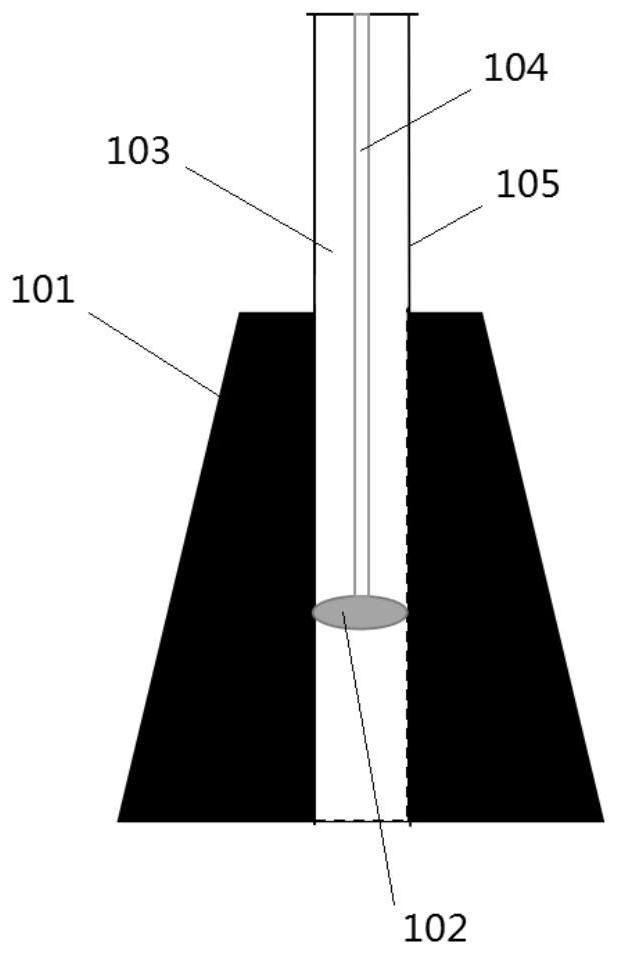A non-invasive blood lipid detection device and detection method based on near-infrared spectroscopy
A technology of near-infrared spectroscopy and near-infrared spectroscopy, which is applied in diagnostic recording/measurement, medical science, diagnosis, etc., can solve problems affecting patient safety, wound infection, environmental pollution, etc., and achieve the effect of broad application prospects
- Summary
- Abstract
- Description
- Claims
- Application Information
AI Technical Summary
Problems solved by technology
Method used
Image
Examples
Embodiment 1
[0030] Embodiment 1: A kind of non-invasive blood lipid detection device based on near-infrared spectrum, such as figure 1As shown, it includes a broadband light source laser 1, a fiber beam splitter 3, a first focusing lens 6, a second focusing lens 7, a first fiber optic probe 10, a second fiber optic probe 11, a third focusing lens 14, and a fourth focusing lens 15 , the first near-infrared spectrometer 16, the second near-infrared spectrometer 17, lock-in amplifier 18, heart rate measuring instrument 20 and computer 19, the optical fiber beam splitter 3 includes an input port and two output ports, and the output port of the broadband light source laser 1 Connect to the input end of the optical fiber beam splitter 3 through the first optical fiber 2, an output end of the optical fiber beam splitter 3 is connected to the input end of the first focusing lens 6 through the second optical fiber 4, and the output end of the first focusing lens 6 is connected through The third op...
Embodiment 2
[0032] The non-invasive blood lipid detection device based on near-infrared spectroscopy in Example 2 differs from Example 1 in that in Example 2, as figure 2 and image 3 As shown, the first optical fiber probe 10 and the second optical fiber probe 11 have the same structure, and both include a hollow circular frustum 101 and a fifth focusing lens 102. The hollow circular frustum 101 is an opaque hollow circular frustum 101, and the fifth focusing lens 102 Embedded in the central hole 103 of the hollow circular frustum 101, the distance between the front end face of the fifth focusing lens 102 and the front end face of the hollow circular frustum 101 is 3 mm, and the rear end of the central hole 103 of the hollow circular frustum 101 is pierced Connecting optical fiber 104 is arranged, connecting optical fiber 104 is facing the rear end of the fifth focusing lens 102, and the outside of connecting optical fiber 104 is provided with protective cover 105, and connecting optica...
Embodiment 3
[0034] Embodiment 3: the noninvasive blood lipid detection method implemented by the noninvasive blood lipid detection device of embodiment 2, comprising the following steps:
[0035] (1) Select 50 volunteers with different blood lipid content, draw their blood, use blood lipid biochemical analyzer to test and record the blood lipid content of each volunteer;
[0036] (2) Measure the characteristic peaks of blood lipids in the near-infrared transmission spectrum of each volunteer. The measurement process is:
[0037] (2-1) Under the stable and suitable external environment conditions, utilize the heart rate measuring instrument 20 to collect the heart rate of the human body in real time and input the heart rate signal into the reference signal input end of the lock-in amplifier 18; The fiber optic probe 10 and the second fiber optic probe 11 are respectively fixed on the same detection site of the human body (in this embodiment, the middle part of the thumb nail of the human h...
PUM
 Login to View More
Login to View More Abstract
Description
Claims
Application Information
 Login to View More
Login to View More - R&D
- Intellectual Property
- Life Sciences
- Materials
- Tech Scout
- Unparalleled Data Quality
- Higher Quality Content
- 60% Fewer Hallucinations
Browse by: Latest US Patents, China's latest patents, Technical Efficacy Thesaurus, Application Domain, Technology Topic, Popular Technical Reports.
© 2025 PatSnap. All rights reserved.Legal|Privacy policy|Modern Slavery Act Transparency Statement|Sitemap|About US| Contact US: help@patsnap.com



